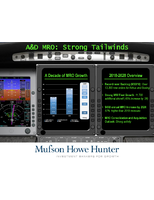Light-to-Digital Converters measure from 0.1-40,000 lux.
Share:
Press Release Summary:
Providing 2.5 V input and 1.8 V digital output, Models TSL2562 and TSL2563 combine visible light blocking photodiode with broadband photodiode on single CMOS IC. Combination enables devices to calculate light intensity in lux over 20-bit dynamic range with 16-bit resolution without use of filter. Two integrating ADCs convert photodiode currents to SMBus output on Model TSL2562 or I²C output on Model TSL22563 that represents irradiance measured on each channel.
Original Press Release:
TAOS, Inc. Now Offering Low-Voltage Versions of TSL2560 & TSL2561 Light-to-Digital Converters
Texas Advanced Optoelectronic Solutions, Inc. (TAOS) -- announced the availability of two new light-to-digital converters that would enable designers to differentiate their display panel products. The patented TSL2560 and TSL2561 Light-to-Digital Converters convert light intensity to a digital signal output capable of direct I²C or SMBus interface. Both devices are designed specifically for use in display panels (LCD, OLED, etc.) to help extend battery life and provide optimum viewing in diverse lighting conditions. The TSL2560 and TSL2561 have been well-accepted by customers. However, TAOS, Inc. has identified a need for low-voltage versions of these two devices that can be used in small display applications such as mobile phones, PDAs, portable media players, cameras, handheld games and camcorders. The TSL2562 and TSL2563 Light-to-Digital Converters have just been released to production. They both provide low 2.5-V input voltage and a 1.8-V digital output.
A copy of the TSL2562/2563 data sheet is attached.
According to iSuppli Corporation, the worldwide small and medium display market, defined as all displays smaller than 10.0 inches, is estimated to grow to a $22 billion market made up of approximately 3 billion units by 2009.
Like the TSL2560 and the TSL2561, the TSL2562 and the TSL2563 Light-to-Digital Converters combine a visible light blocking photodiode with a broadband photodiode on a single CMOS integrated circuit. This combination enables either device to be used to calculate light intensity in lux over an effective 20-bit dynamic range with a 16-bit resolution without the use of an expensive filter. Two integrating analog-to-digital converters (ADC) convert the photodiode currents to an SMBus (TSL2562) or I²C (TSL22563) digital output that represents the irradiance measured on each channel. This output data can be input to a microprocessor where illuminance (i.e. ambient light level) in lux is derived using an empirical formula that is less than 200 bytes of code. The TSL2562 permits an SMB-Alert style interrupt and the TSL2563 supports a traditional style interrupt that remains asserted until the firmware clears it.
The TSL2562 and the TSL2563 can measure light levels ranging from 0.1 lux to 40,000 lux. No external circuitry is required for signal conditioning, thereby saving PCB real estate as well. In ambient light sensing applications, the integrating conversion technique used in both devices eliminates the effect of fluorescent flicker, thereby increasing the stability of the measurement. A single-supply operation (2.38 V to 2.62 V) makes both devices well-suited for mobile applications. Moreover, when not in use, a power down mode ensures that the TSL2562 and the TSL2563 consume as little power (8 uW) as possible.
The TSL2562 and the TSL2563 Light-to-Digital Converters are available now from TAOS, Inc. and its authorized distributors. Both devices come in two standard 6-pin packages: Chipscale (CS) -- 1.7mm (l) x 1.2mm (w) x 0.7mm (h) -- and Transfer Molded Board (T) -- 3.8mm (l) x 2.6mm (w) x 1.4mm (h). The TSL2562/2563 has a suggested resole price of $1.25 in 1,000-piece quantities. In addition, an Evaluation Module with a USB interface is available from TAOS, Inc. and its authorized distributors with a suggested resale price of $125.00.




